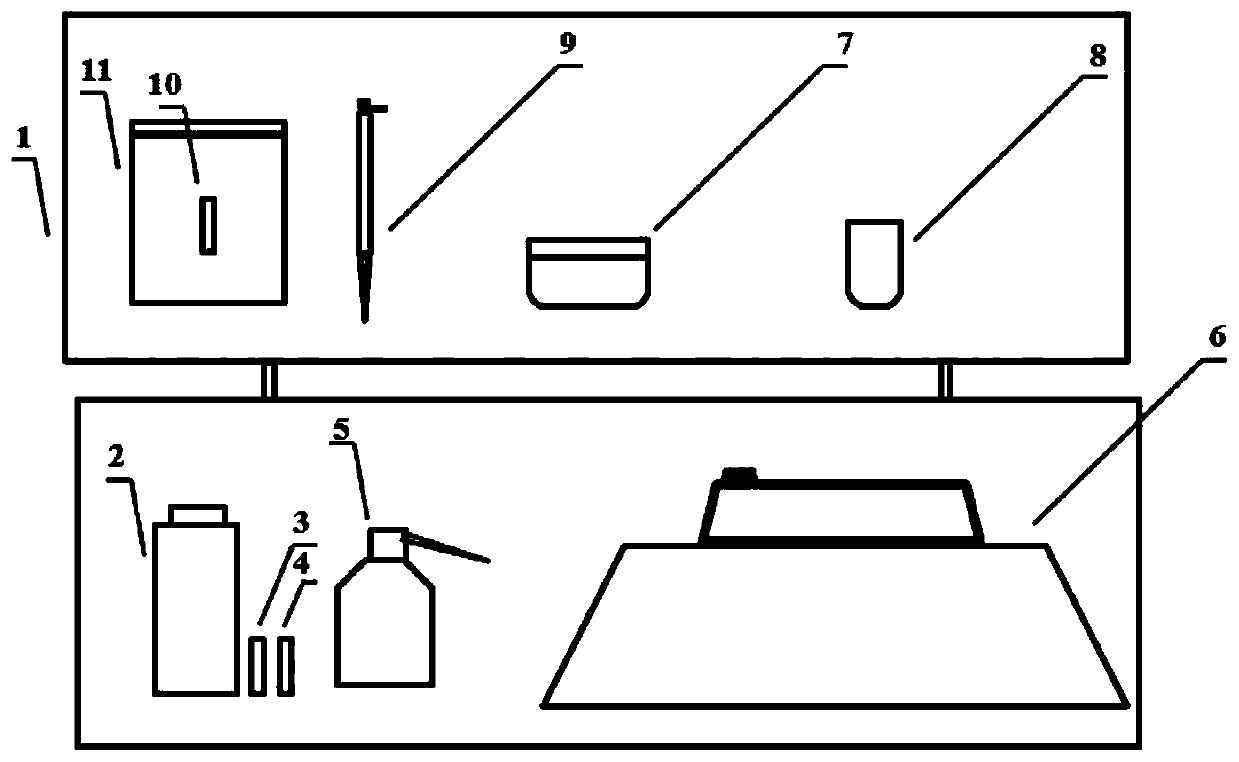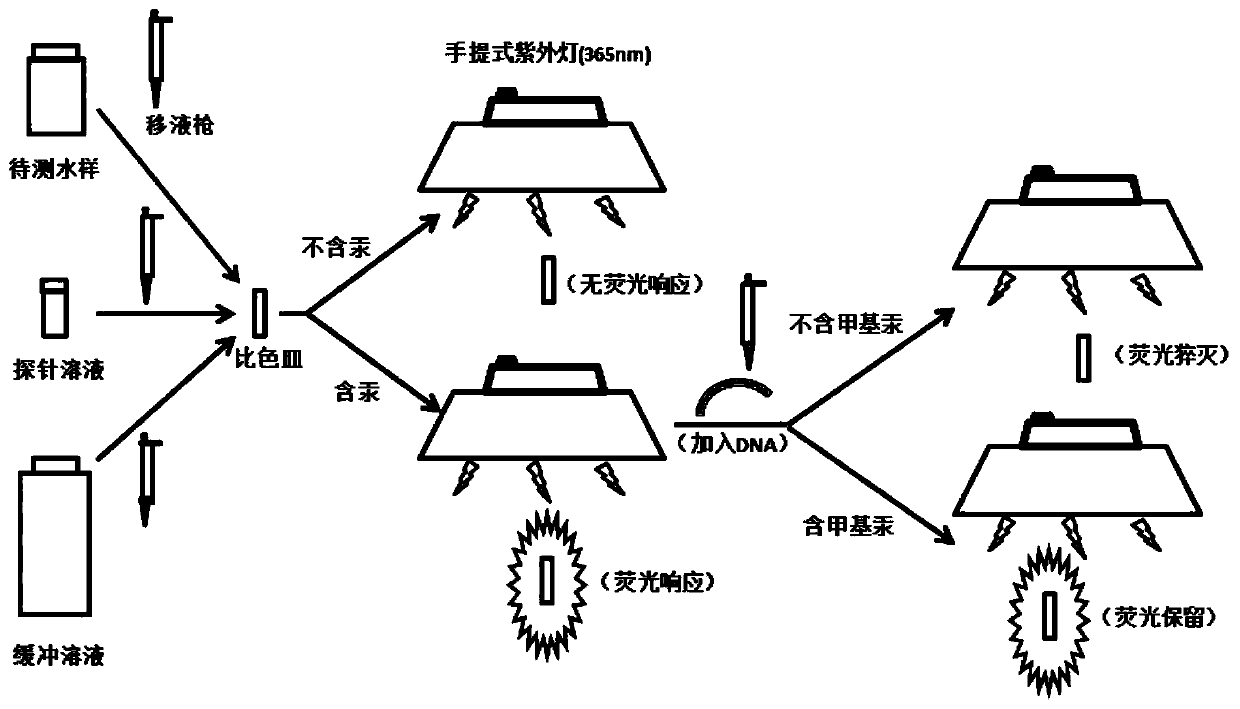Fluorescent probe kit for detecting total mercury and methyl mercury in water and detection method
A technology of fluorescent probes and detection methods, applied in the direction of fluorescence/phosphorescence, chemical instruments and methods, measuring devices, etc., can solve the problem of fewer fluorescent probes, and achieve the effect of strong affinity
- Summary
- Abstract
- Description
- Claims
- Application Information
AI Technical Summary
Problems solved by technology
Method used
Image
Examples
Embodiment 1
[0050] S11. Use a pipette gun to draw 2.5mL of acetonitrile-HEPES buffer solution and 2.5mL of standard water sample BY-1 into the cuvette, mix well and irradiate with an ultraviolet lamp with a wavelength of 365nm in a dark place to obtain a reference;
[0051] S12. Add 0.1mL of probe solution to the above reference, mix well and irradiate again in the dark with a UV lamp with a wavelength of 365nm. It can be observed that there is blue fluorescence visible to the naked eye in the cuvette;
[0052] S13. Continue to add 4 μL of DNA solution to the reference in step S12. After mixing, continue to irradiate with an ultraviolet lamp with a wavelength of 365 nm in the dark. It can be observed that the blue fluorescence in the cuvette disappears, and the solution appears similar to the reference. traits.
[0053] It can be seen from the above test phenomena that the standard water sample BY-1 only contains mercury ions.
Embodiment 2
[0055] S21. Use a pipette gun to draw 2.0mL of acetonitrile-HEPES buffer solution and 3.0mL of standard water sample BY-2 into the cuvette, mix well and irradiate in the dark with an ultraviolet lamp with a wavelength of 365nm to obtain a reference;
[0056] S22. Add 0.1 mL of probe solution to the above reference, mix well and irradiate again in a dark place with an ultraviolet lamp with a wavelength of 365 nm, and it can be observed that there is blue fluorescence visible to the naked eye in the cuvette;
[0057] S23. Continue to add 5 μL of DNA solution to the reference in step S22. After mixing, continue to irradiate with an ultraviolet lamp with a wavelength of 365 nm in the dark. It can be observed that the blue fluorescence in the cuvette does not disappear, and there is no change in intensity.
[0058] It can be seen from the above test phenomena that the standard water sample BY-2 only contains methylmercury.
Embodiment 3
[0060] S31. Use a pipette gun to draw 3.0 mL of acetonitrile-HEPES buffer solution and 2.0 mL of standard water sample BY-3 into the cuvette, mix well and irradiate in the dark with an ultraviolet lamp with a wavelength of 365 nm to obtain a reference;
[0061] S32. Add 0.1 mL of the probe solution to the above reference, mix well and irradiate again in the dark with an ultraviolet lamp with a wavelength of 365 nm, and it can be observed that there is blue fluorescence visible to the naked eye in the cuvette;
[0062] S33. Continue to add 5 μL of DNA solution to the reference in step S32. After mixing, continue to irradiate with an ultraviolet lamp with a wavelength of 365 nm in the dark. It can be observed that the blue fluorescence intensity in the cuvette decreases, but it is not completely quenched. , indicating that the standard water sample BY-3 contains mercury ions and some methylmercury. In order to ensure that the fluorescence of mercury ions can be completely quenche...
PUM
 Login to View More
Login to View More Abstract
Description
Claims
Application Information
 Login to View More
Login to View More - R&D
- Intellectual Property
- Life Sciences
- Materials
- Tech Scout
- Unparalleled Data Quality
- Higher Quality Content
- 60% Fewer Hallucinations
Browse by: Latest US Patents, China's latest patents, Technical Efficacy Thesaurus, Application Domain, Technology Topic, Popular Technical Reports.
© 2025 PatSnap. All rights reserved.Legal|Privacy policy|Modern Slavery Act Transparency Statement|Sitemap|About US| Contact US: help@patsnap.com



